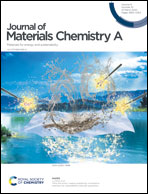Machine learning-based high throughput screening for nitrogen fixation on boron-doped single atom catalysts†
Abstract
Production of ammonia via electrochemical nitrogen reduction reaction (NRR) has recently attracted much attention due to its potential to play a vital role in producing fertilizers and other chemicals. High throughput screening of electrocatalysts for the NRR requires numerous calculations in the search space, making the computational cost a bottleneck for predicting eligible electrocatalysts. Here we used a deep neural network (DNN) to predict efficient electrocatalysts for the NRR among boron(B)-doped graphene single atom catalysts (SACs). This model can noticeably reduce the time of computation by removing non-efficient catalysts from screening. Also, the adsorption energy and free energy can be predicted by the feature-based light gradient boosting machine (LGBM) model. These features represent the geometrical structure as well as bonding characteristics. Among the catalysts evaluated, three candidates were identified as very promising catalysts, offering excellent selectivity over the hydrogen evolution reaction (HER). CrB3C1 exhibited a minimal overpotential of 0.13 V for the NRR. This study provides a new pathway for the rational design of catalysts for nitrogen fixation by employing the most important features involved in the NRR by using machine learning methods.

- This article is part of the themed collection: Editor’s Choice: Machine Learning for Materials Innovation


 Please wait while we load your content...
Please wait while we load your content...